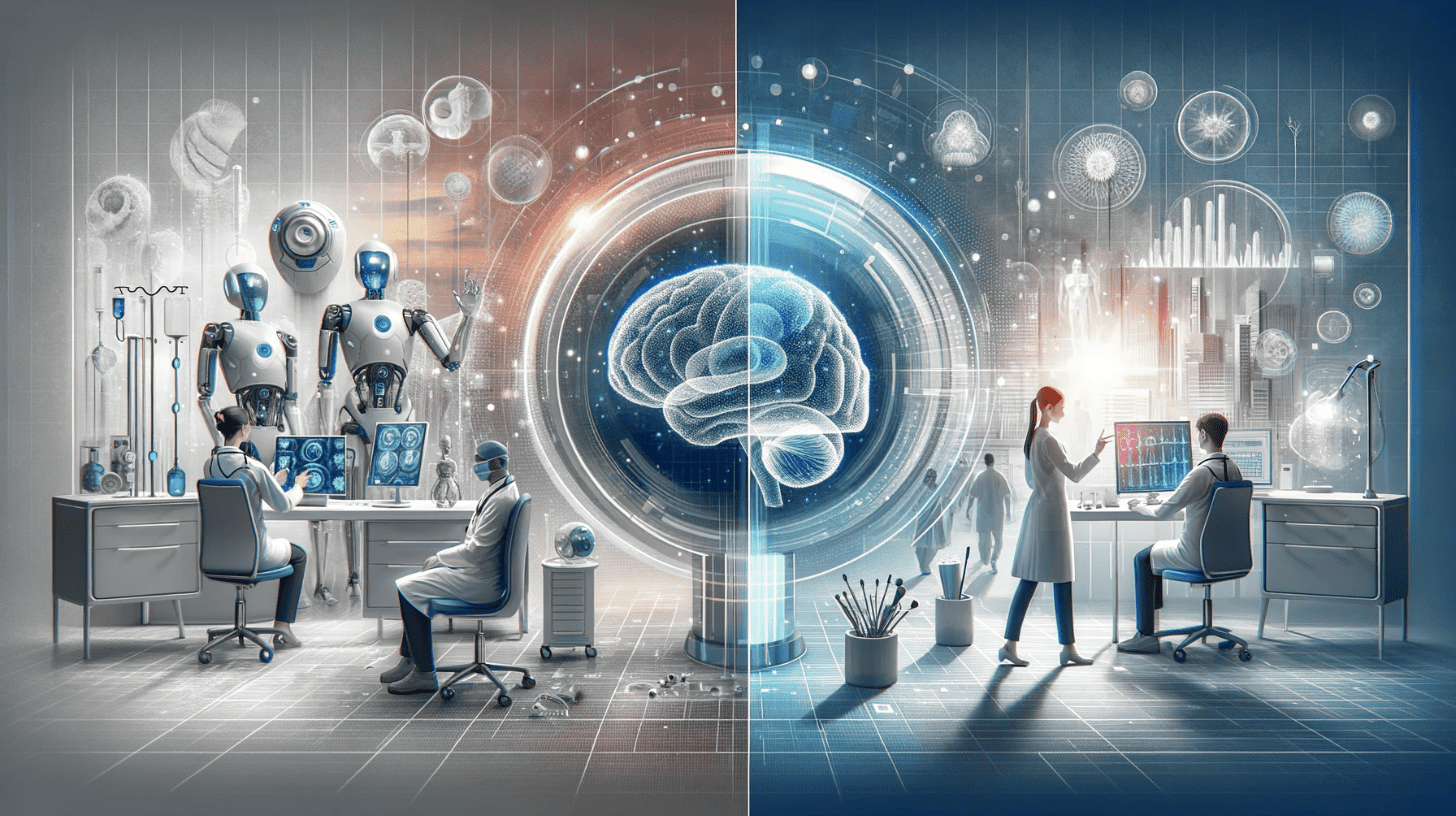Introduction to AI in Healthcare

The healthcare landscape is undergoing a seismic shift, and at the heart of this transformation lies artificial intelligence (AI). Imagine a world where machines can analyze vast amounts of medical data in seconds, predict patient outcomes with remarkable accuracy, and assist doctors in making life-saving decisions. This isn’t science fiction; it’s rapidly becoming our reality.
As we delve into the intersection of AI and medicine, we’ll explore how these technologies are revolutionizing patient care, enhancing diagnostics, and streamlining operations within healthcare systems. The potential is immense—ushering in an era where treatments are more personalized than ever before. Yet, as we embrace these advancements, important questions about ethics and implementation arise. Join us on this journey to uncover the future of medicine powered by AI technology!
The Advantages of Integrating AI into Healthcare

Integrating AI into healthcare transforms patient care and operational efficiency. One significant advantage is enhanced diagnostic accuracy. Algorithms analyze vast datasets, identifying patterns that may elude human experts.
Another benefit lies in predictive analytics. AI can forecast disease outbreaks or predict patient deterioration based on historical data and real-time monitoring. This proactive approach allows for timely interventions.
AI also streamlines administrative tasks, reducing the burden on healthcare professionals. Automated scheduling and billing processes free up time for providers to focus more on patient interaction.
Moreover, personalized medicine becomes a reality with AI technologies. Tailored treatment plans developed through machine learning consider individual genetics and lifestyle factors, leading to better outcomes.
Patient engagement improves as well; chatbots provide answers around the clock, making information accessible without long wait times. Embracing these advantages paves the way for a more efficient healthcare system that prioritizes both patients and providers alike.
Real-life Examples of AI in Healthcare

AI is reshaping the healthcare landscape with remarkable applications. One notable example is IBM’s Watson, which analyzes vast amounts of medical data to assist doctors in diagnosing diseases and recommending treatments.
Another impressive application is Google’s DeepMind technology. It can predict patient deterioration by analyzing electronic health records, enabling timely interventions that save lives.
In radiology, AI algorithms are increasingly used for image analysis. They help detect anomalies faster than traditional methods, improving diagnostic accuracy significantly.
Additionally, chatbots like Buoy Health offer personalized symptom checking and real-time guidance for patients. These virtual assistants streamline access to care while alleviating pressure on healthcare professionals.
Telemedicine platforms are also leveraging AI to enhance remote consultations. Virtual assistants triage patients based on their symptoms before they even see a doctor, making healthcare more efficient and accessible than ever before.
Addressing Concerns and Ethical Issues
The integration of AI in healthcare raises significant ethical concerns. Data privacy is paramount. Patients must trust that their sensitive information will not be misused or exposed.
Bias in algorithms can lead to unequal treatment outcomes. If AI systems are trained on non-diverse data, they may inadvertently favor certain demographics over others.
Accountability also becomes a pressing issue. When an AI system makes a mistake—say, misdiagnosing a condition—who is responsible? This ambiguity complicates patient care and legal ramifications.
Informed consent must evolve alongside technology. Patients should fully understand how AI influences their diagnosis and treatment options before proceeding with care decisions.
Moreover, the human touch in medicine cannot be overlooked. While efficiency improves with automation, maintaining empathy remains crucial for holistic healing experiences in healthcare settings.
Challenges and Limitations of AI in Healthcare
The integration of AI in healthcare is not without its hurdles. One significant challenge lies in data privacy. Patient information must remain confidential, yet massive datasets are essential for training algorithms.
Another concern revolves around the accuracy of AI-generated results. Algorithms can misinterpret symptoms or diagnoses if trained on biased or incomplete data. This could lead to severe consequences for patient care.
Additionally, there’s a lack of standardization across different systems and platforms. Inconsistent protocols make it difficult to implement AI tools effectively within diverse healthcare environments.
Healthcare professionals may also feel apprehensive about relying too heavily on technology. The fear is that human intuition and empathy might be overshadowed by machine learning decisions.
Cost remains a barrier for many institutions wishing to adopt these innovative solutions. Budget constraints can hinder access to advanced technologies that promise better patient outcomes.
The Future of AI in Healthcare
The landscape of healthcare is rapidly evolving, thanks to AI technology. We are on the brink of transformative changes that promise improved patient care and streamlined operations.
Imagine algorithms predicting health issues before they manifest, allowing for preventive measures tailored to individual needs. This proactive approach could drastically reduce hospital visits and enhance quality of life.
AI-powered tools could refine diagnostics with remarkable accuracy. No more guessing games; just precise information at our fingertips. From image analysis in radiology to genomics, the potential applications seem limitless.
Moreover, telemedicine integrated with AI can offer round-the-clock consultations. Patients might receive instant support without stepping into a clinic.
As we look ahead, cooperation between AI systems and healthcare professionals will be crucial. The synergy has the power not only to elevate medical practices but also to provide patients with personalized experiences like never before.
Conclusion: The Importance of Balancing Human Touch with Technological Advancements
As we embrace the rapid advancements in AI and technology, the human element must remain at the forefront of healthcare. Patients value empathy, understanding, and connection with their caregivers.
AI can enhance diagnostics and streamline processes, but it cannot replace a compassionate touch. The art of medicine involves listening to patients’ concerns, interpreting emotions, and providing reassurance—qualities that machines simply cannot replicate.
Moreover, striking a balance ensures that innovations complement rather than overshadow traditional practices. This synergy can lead to improved patient outcomes while maintaining dignity in care delivery.
Fostering this harmony encourages trust between patients and providers. It cultivates an environment where technology supports healing without compromising essential human interactions crucial for holistic health experiences.










